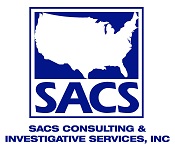Ever heard the term “Fish rots from the head”? This is a simple saying that has a powerful meaning when applied to a failing organization. Basically, it means the cause of failure comes from bad management or the “heads” of the organization. Once the head starts to “rot” efforts to turn things around are often impossible to achieve.
To ensure a company thrives, it’s important to know how to spot and stop a defective manager before irrevocable “rot” is impossible to reverse. In other words, look for it, confront it, and eliminate it.
Look for the Signs
It’s a good bet that everyone in the workforce today has come across at least one bad manager. No matter what data is brought to their attention, or valuable insight is provided by their team, they are going to do it their way, regardless. Sometimes it’s easy to spot these selfish leaders, but other times it’s not as obvious.
To keep these dysfunctional managers from causing a chain reaction of failure throughout the organization, it’s important to take note of warning signs:
- High turnover rates among members of the team
- Lack of respect for employees/customers/clients (i.e. formal or “water cooler” complaints/comments)
- Avoids hand-on interaction with employees (i.e. leads from afar)
- Does not take ownership for team failures (i.e. transfers blame to “incompetent” employees)
When organizational leaders see these signs, they must address them immediately. However, sometimes the manager is a master of manipulation and will put on a “good show” for their direct reports.
Therefore, to stay on top of the true effectiveness of management, leadership needs to go directly to the source on a regular basis: the employees.
Confront the Source
Managers should be judged by the success of their employees, not by telling company leadership what they want to hear. To make sure a manager is effective at their job, it is essential to interact with employees, no matter what level and find out what is really going on.
Try the following tactics to discover how management is really doing by:
- Randomly sitting in on a team meeting
- When an employee asks to leave the team, have an “exit” meeting to find out why without the manager present
- Interact with employees in the lunchroom, at their desk, in the elevator etc.
- Make a point to observe the “feeling” of the office, including the looks on people’s faces, the tone of voice being used among coworkers etc.
Overall, leadership should be interactive and visible to all employees. This not only helps keep control of managers, but also nurtures a positive company culture.
If an organization continues to lead and manage employees by interacting only with each other the company culture will suffer. Once this happens, make no mistake, talent will leave, and the organization will begin to fail.
Remember: “Fish rots from the head.” Leadership must take a vested interest in the health of their workforce and make it impossible for a bad manager to fester and rot the organization from within.
SACS Consulting Can Help You Retain Valued Employees
SACS Consulting & Investigative Services, Inc. can help your organization establish sound HR policies and procedures to improve workplace culture, help prevent disagreements and make certain everyone is treated equally. We also provide customized training to address specific issues like Creating and Maintaining a Positive Company Culture and Understanding and Managing Ethics in the Workplace. Contact Us to find out how we can help put you back in control of Human Resources!

